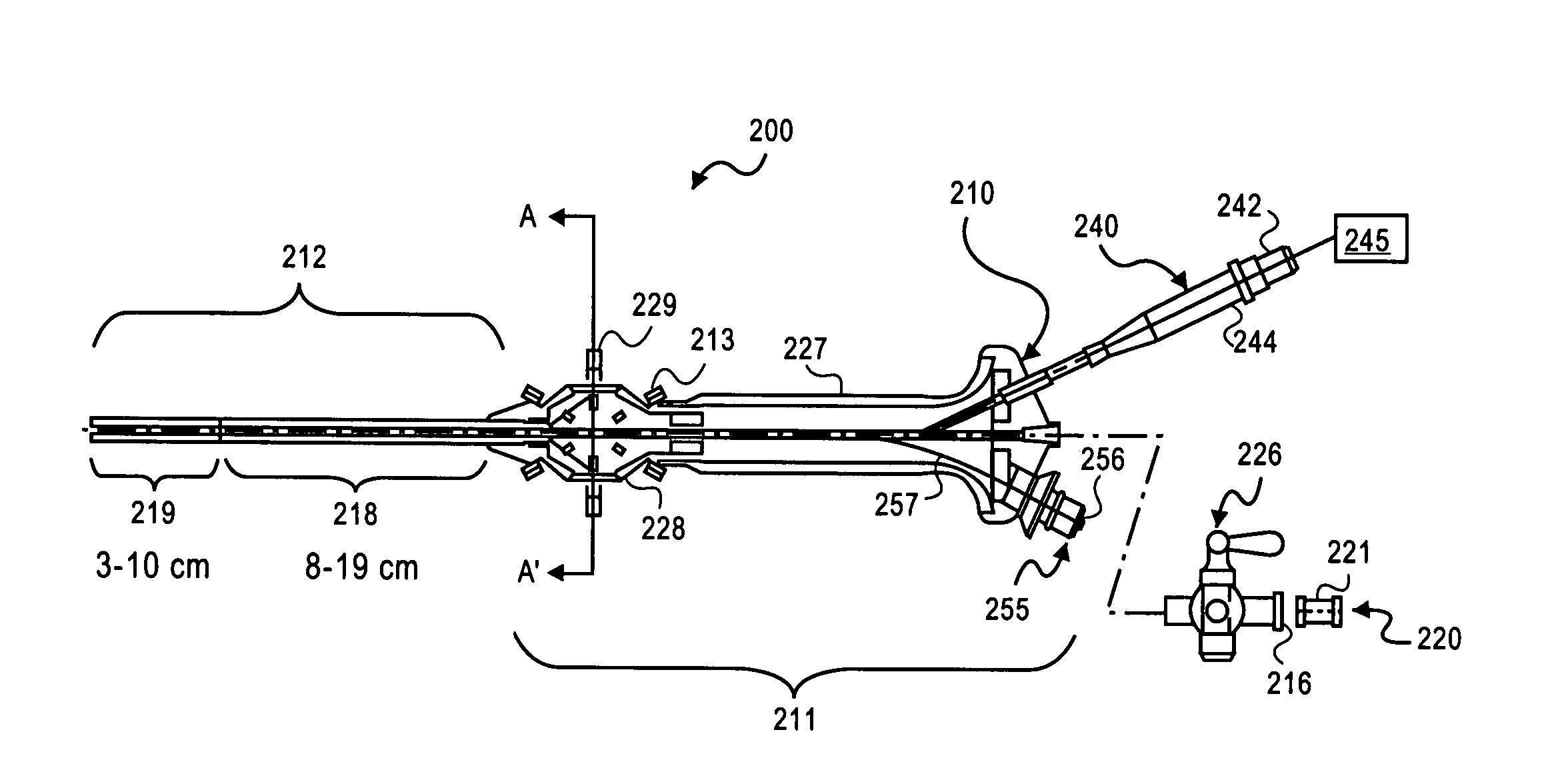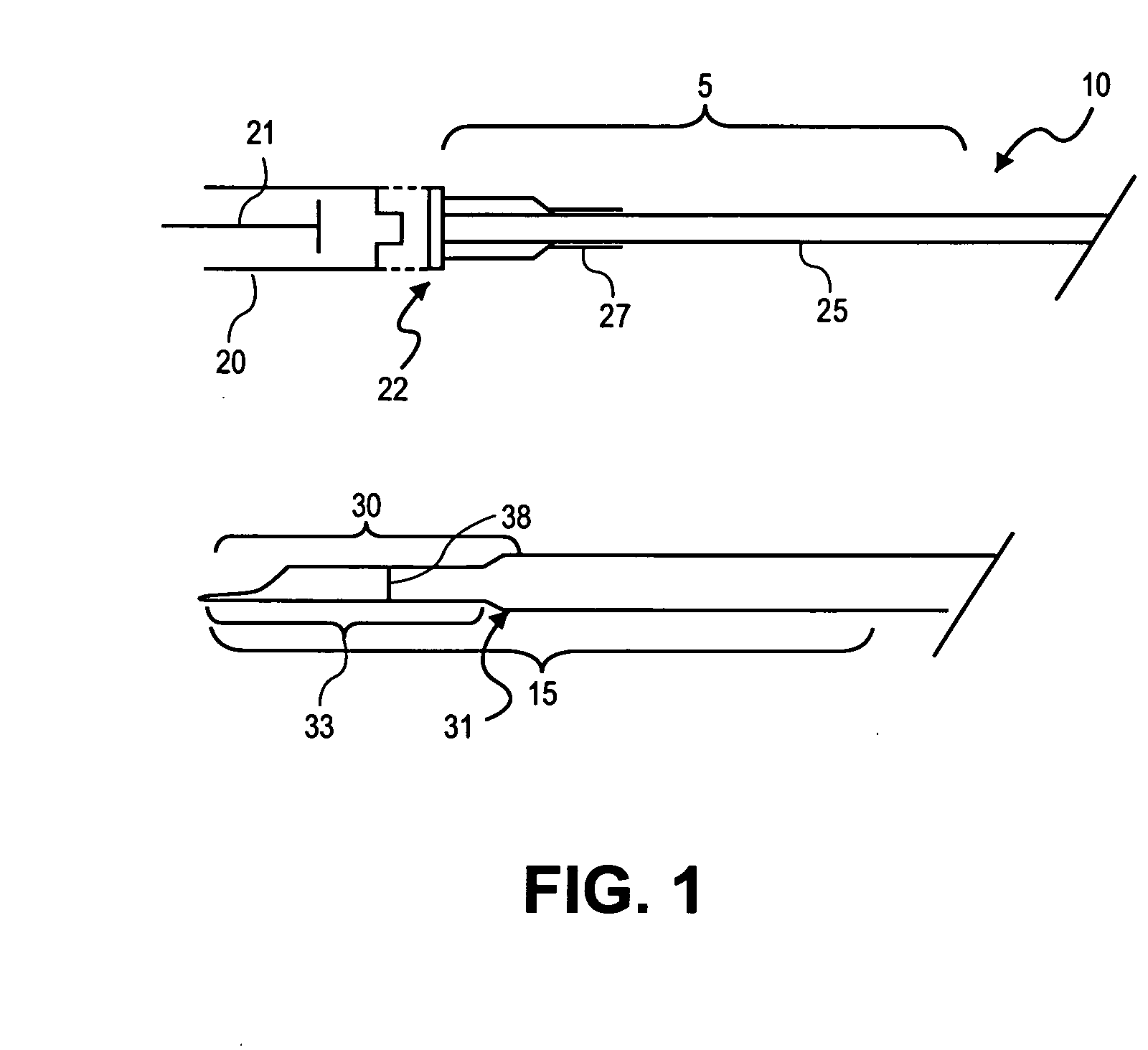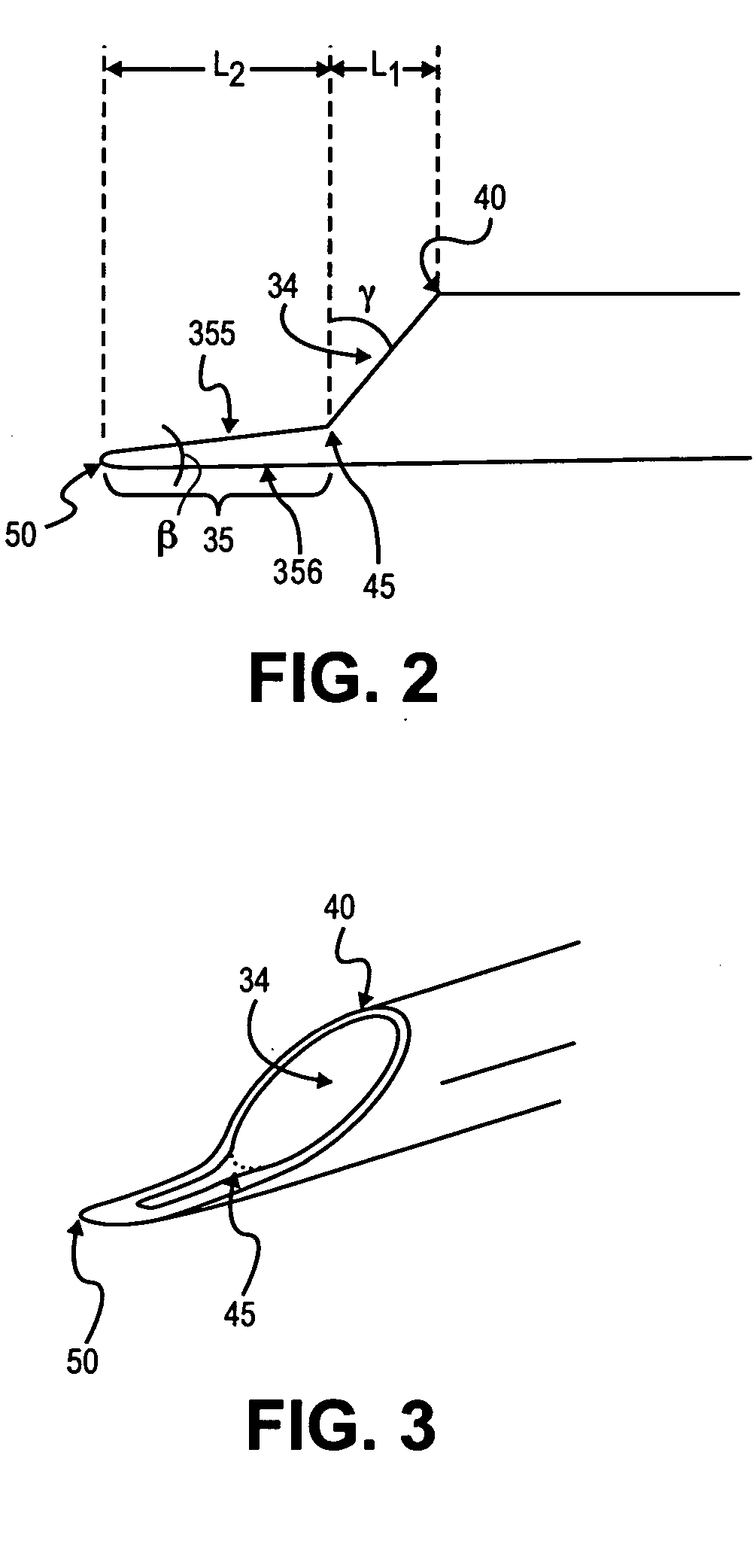Endoscopic devices and method of use
a technology of endoscopic devices and methods, applied in the field of endoscopic devices, can solve the problems of failure to achieve high ivf success rates and less than optimal solutions, and achieve the effect of minimizing the loss of embryos
- Summary
- Abstract
- Description
- Claims
- Application Information
AI Technical Summary
Benefits of technology
Problems solved by technology
Method used
Image
Examples
Embodiment Construction
[0019] Referring now to the drawings, illustrated in FIGS. 1-3 is one embodiment of a microcatheter. Microcatheter 10 includes, in this embodiment, proximal portion 5 and distal 15. Microcatheter 10 includes shaft or cannula 25 having a lumen therethrough. Shaft 25 terminates at distal shaped end 30. Proximal portion 5 includes, at proximal end 22, a hub to mate with operational syringe 20, with plunger 21. The hub is, for example, a luer lock fitting. In one embodiment, extending approximately 25-30 millimeters from the hub is stabilizer 27 of, for example, a polymer tube having an inner diameter slightly greater than an external diameter of shaft 25.
[0020] Shaft 25 defines a lumen therethrough for, representatively, introducing one or more embryos into a uterus of a subject. In one embodiment, shaft 25 is an extruded one piece polymer material having a length on the order of 70 centimeters (cm). Suitable polymers for shaft 25 are selected such that the shaft has sufficient rigidi...
PUM
 Login to View More
Login to View More Abstract
Description
Claims
Application Information
 Login to View More
Login to View More - R&D
- Intellectual Property
- Life Sciences
- Materials
- Tech Scout
- Unparalleled Data Quality
- Higher Quality Content
- 60% Fewer Hallucinations
Browse by: Latest US Patents, China's latest patents, Technical Efficacy Thesaurus, Application Domain, Technology Topic, Popular Technical Reports.
© 2025 PatSnap. All rights reserved.Legal|Privacy policy|Modern Slavery Act Transparency Statement|Sitemap|About US| Contact US: help@patsnap.com



